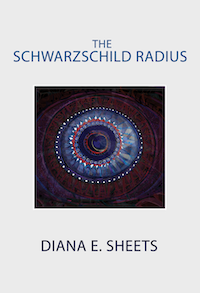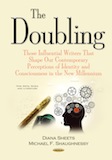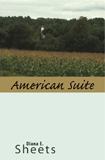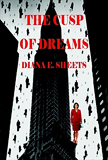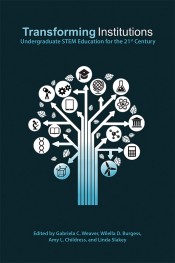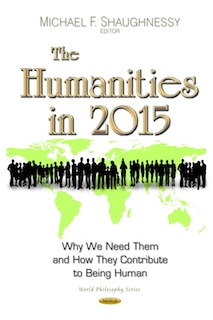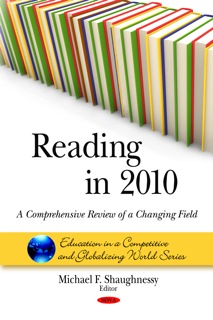Reading and Thinking Critically in the Age of Disputation, Part I
Part I of “Reading and Thinking Critically in the Age of Disputation”. This essay on critical thinking will be serialized in three parts. It is available in an edited collection Critical Thinking and Higher Order Thinking: A Current Perspective edited by Michael F. Shaughnessy and published in 2012 by Nova Science Publishers. A “read only” version of this essay, provided it is intended for noncommercial purposes, may be accessed from my Literary Gulag website, http://www.literarygulag.com/Critical-Thinking.pdf. All copyright permissions must be obtained from the publisher.
Diana Sheets
English and History Departments,
University of Illinois
Dedicated to Max Weismann, Chairman of the Great Books Academy and Will Fitzhugh, Editor and Publisher of The Concord Review.
Abstract
This essay will examine the methodology that lies at the heart of critical thinking, its strengths and its weaknesses. It will consider the history of the book and its corollary, the “enlightened reader”, while assessing the decline of readerly excellence and the social consequences that gave rise to disputatious thinking. The argument will be that the loss of sustaining values brought about by countercultural influences ensured the triumph of narcissism and the emergence of a reinvented orality founded on modern media, especially the Internet, which celebrates emotional groupthink at the expense of the “enlightened self”. The result is the diminution of reason that all but precludes the possibility of critical thinking.
Introduction
By all accounts America is a nation at war with herself. Listen to Talk Radio and NPR, watch Fox News and MSNBC News, read the Wall Street Journal and The New York Times and the clash between “progressives” and conservatives becomes apparent: Our differing perspectives on spending, military intervention, and social welfare policies, as well as environmental, medical, and educational legislation suggest a myriad of issues that divide us. But the rift is deeper than that. Beneath the chasm of ideological and party preferences are fundamental disagreements in our worldviews. These conflicts are rooted in how we were raised and inform the emotional basis for our intellectual arguments. These foundational perspectives provide the starting point for the values that shape our vision of what society should be and, indeed, inform our dreams and hopes as Americans.
How do we navigate our conceptual divide? We must be “strong readers”. We must immerse ourselves in the books and ideas expressed by some of the greatest scholars of all time, men and women who have provided us with profound insights into the human condition. We must employ critical thinking to expose the strengths and weaknesses of their arguments. Our analytical intelligence must prevail over our emotional responses. We must possess a disciplinary expertise whether that be history or literature or science or philosophy or music or art that supplies the knowledge and perspective with which to engage in critical thinking.
What is Critical Thinking and How is it Achieved?
While there are many definitions for critical thinking, the one provided by YourDictionary.com will suffice: “The term critical thinking refers to the thought processes used to evaluate information and the practice of using such conclusions to guide behavior. The process of critical thinking is associated with accuracy, logic, depth, fairness, credibility, and intellectual clarity” (as cited in “Define Critical Thinking”, n.d.). Thus, critical thinking is an intensive analysis of the basis of an argument by means of objective criteria. As Anthony Weston notes in A Rulebook for Arguments, critical thinking is argument, rather than disputation. Critical thinking, he suggests, is not “a verbal fistfight”. It is about offering “a set of reasons or evidence in support of a conclusion” (Anthony Weston, A Rulebook for Arguments, 2nd Edition, Hackett Publishing Company, 1992, p. x).
What is the methodological basis for critical thinking? It begins with the hypothesis that we are attempting to prove. Thus, the conclusion becomes the driving engine for our hypothesis since all arguments must be validated by the conclusion. A critical thinker needs to distinguish between the premises that form the foundation for the hypothesis and the conclusion. The argument should begin with reliable premises and it should proceed in logical sequence. Examples should be representative of the issues at hand. The critical thinker should consider counter examples and demonstrable evidence that negates them. Argument by analogy may be helpful. Sources should be informative and unbiased. Their claims must be validated. If impartiality is suspect, verify independently the claims made. Ad hominem arguments are not necessarily cause for dismissal of evidence. The terms and language used must have clarity and reflect the discipline and methodology employed. Correlated events must be proven to bear upon the findings. The argument must demonstrate the causal factors that inexorably lead to the conclusion. The conclusion must be the best, most likely consequence (Weston).
Critical thinking, however, is more than a rulebook for presenting a good argument. Values, skills, and attitudes influence our “systematic evaluation” that forms the basis for our critical thinking. As M. Neil Browne and Stuart M. Keeley suggest in Asking the Right Questions: A Guide to Critical Thinking, how we pose the issues framing our argument is essential to the success of our endeavor. Through this means we uncover the weakness of an argument. We discern the value-laden terms, as well as any factual bias and reductionism that could lead to “the myth of the ‘right answer’”. We learn to distinguish between thinking and feeling by positioning ourselves outside the body of the argument to pose the question “Who Cares?” in order to be reminded of the importance of assessing the relevancy of issues pertaining to our subject. Most of all, we are able to distinguish between “weak-sense critical thinking” that affirms ascendant beliefs and “strong-sense critical thinking” that challenges the basis for even the most sacrosanct causes (M. Neil Browne & Stuart M. Keeley, Asking the Right Questions, 8th edition, Prentice Hall, 2007, pp. 2, 7, 9, 10). To accomplish this means ascertaining the hidden motives, the emotions and belief systems driving our argument, those values that form the foundation for our worldview.
For Mortimer J. Adler and Charles Van Doren critical thinkers are “active readers” who have the ability to engage in a sophisticated and knowledgeable cultural analysis about a broad range of subjects. However, to accomplish this “active readers” must be able to follow an argument in all its complexity in order to assess its relative strengths and weaknesses. In 1972 Adler and Van Doren published How to Read a Book, a revision of an earlier edition written by Adler that was first published in 1940. How to Read a Book provides readers with a detailed analysis on how to develop their skills as “active readers”. Many of its techniques are used by the critical thinking community today. So what is its methodology? Adler and Van Doren make a distinction between being “informed” and “enlightened”. In terms of reading a book and understanding its arguments, the authors suggest “to be informed is to know simply that something is the case”. Whereas to be “enlightened”, they assert, occurs “when, in addition to knowing what an author says, you know what he means and why he says it” (Mortimer Jerome Adler & Charles Lincoln Van Doren, How to Read a Book, Simon and Schuster, 1972, p. 11).
To succeed in this endeavor, the “enlightened reader” must be engaged in critical thinking. He or she must understand the entire story and its larger relevance, which necessitates a broad-based cultural understanding in order to ascertain the book’s merits. For the “active reader” must be capable of evaluating the narrative through an assessment of the potential strengths and weakness of the argument. He or she must possess the ability to make inferences, draw connections, and reach conclusions that extend well beyond the book under discussion. The “active reader” has the capacity for original thought. His or her analytic perspective presupposes that truth, rather than belief, governs his or her analysis. This intellectual journey—often arduous and fraught with challenges—is the pathway to enlightenment (Adler & Van Doren).
Critical thinking defines the “enlightened reader”. Note, for example, the similarity between Adler and Van Doren’s expression “active reading” and Browne and Keeley’s term “strong-sense critical thinking”. Adler and Van Doren suggest there are four stages of “active reading”. First, is “Elementary Reading” in which the basic meaning of the book is ascertained. Second, is “Inspectional Reading” where a reader learns how to skim or pre-read a book to ascertain its intention, structure, and classification—history, science, fiction, and other designations. Third, is “Analytical Reading”, which places demands upon the reader. To be an “active reader”—which one must be to be engaged in “Analytical Reading”—necessitates addressing four essential questions. What is the narrative? What are the detailed arguments and how are these presented? Is the book entirely truthful or just in places? Finally, what is its significance? Analytical reading necessitates a deep understanding of the scope of a work. At the apex of the “active reading” pyramid is “Syntopical Reading”. Here the reader makes substantive comparisons between books based on their subject matter. “Syntopical Reading” is more than the sum of its parts. A “Syntopical Reader” has read broadly across subjects and disciplines, thereby achieving a cross fertilization of ideas enabling him or her to draw inferences and conclusions that transcend the content of any given work or works (Adler & Van Doren).
All “Analytic Readers” are engaged in critical thinking. They are determining the author’s intent, his or her terminology, as well as the premises and conclusions posed by the author that form the basis of opinion or argument. An “Analytic Reader” understands that “reading a book is a kind of conversation” (Adler & Van Doren, p. 137), one that employs fair-minded approaches to criticism. But for Adler and Van Doren, it is the “Syntopical Reader”—one who is a comparative reader engaged in a broad-based spectrum of analysis capable of drawing inferences and conclusions larger than the sum of any one book or collections of works—who is the critical thinker par excellence (Adler & Van Doren). Thus, we realize that How to Read a Book forms the basis for what we today refer to as critical thinking.
History of the Book, the “Enlightened Reader”, and the “Information Landscape”
To understand what is at stake in the development and nurturance of the “enlightened reader”—one who is a “Syntopical Reader” fully engaged in critical thinking—it is helpful to place reading and thinking within a historical context. To accomplish this, we must familiarize ourselves with the history of books and their relationship to and their impact upon readers. We must ask ourselves the following: How did the development of books change the way humans thought, behaved, and interacted with their world?
Our “information landscape” commenced, according to Robert Darnton, when humans first began writing around 4000 BC. Egyptian hieroglyphs date back to 3200 BC. Alphabetical characters were introduced around 1000 BC. Jack Goody has suggested that writing was the single most important innovation in human history, a development that paved the way for the emergence of the book and its decisive role in history (Robert Darnton, The Case for Books: Past, Present, and Future, PublicAffairs, 2009).
During the late 5th century BC, the book, as we now understand it, emerged. It was during this period that images on Attic vases transition from depictions of books as devices to preserve critical information for educational and other purposes to scenes of readers actively reading books while engaging in conversations or attending social gatherings. By then books began to assume their function to instruct and delight. Books were read aloud before groups of people since oratory was the prevalent form of communication. Oratory was necessary because the written words ran together making it almost impossible to distinguish intention and meaning until vocalized, but also because manuscripts were scarce and readers relatively few compared with those hungering to understand their meaning and relevance. During the Hellenic age oral reading became prevalent and private collectors began acquiring libraries, typically for professional purposes. However even then there were readers for whom knowledge extended beyond the bounds of disciplinary rigor. Thus when Socrates queried Euthydemus on the reason he possessed so many books, “perhaps a rhapsodist, then?”, the response by Euthydemus suggested a passion for reading that extended well beyond the bounds of professional dictates (as cited in the “Introduction” of A History of Reading in the West, Eds. Guglielmo Cavalllo & Roger Chartier, Trans. Lydia G. Cochrane as part of the series Studies in Print Culture and the History of the Book, University of Massachusetts Press, 1999, p. 8).
Julian Jaynes has argued that the modern origin of human consciousness, what we commonly refer to as self-consciousness, occurred around 1200 BC when the bicameral mind broke down and began establishing associative connections that enabled one side of the brain to communicate to the other. This transition, he suggested, was evident in the distinctions between the writing style of The Iliad—preconscious, when thoughts were interpreted as the commands of God compelling humans to take action—and The Odyssey—conscious, a realization that these voices were actually the individual’s own thoughts and feelings (Julian Jaynes, The Origin of Consciousness in the Breakdown of the Bicameral Mind, Houghton Mifflin Company, 1976).
By the second century AD, during Roman Empire, books were transitioning from scrolls—papyrus—to codex—typically, parchment (Cavallo & Chartier). The codex contained sheets that were folded, stitched, and bound. This format resembled the shape and look of books we read today. This revolution in book production ushered in the second transformative change in our “information landscape” (Darnton). More books were produced and they were increasingly featured in private and public libraries where citizens might gather to hear them read. By the third century the codex was becoming an essential means for the dissemination of Christianity, aided by the facility of turning pages and leafing through books (Cavallo & Chartier; Darnton).
The Middle Ages shifted the domain for reading from outdoor, public spaces to the interior of religious institutions. During this period reading shifted from public oratory to silent or murmured reading (Cavallo & Chartier), a practice accelerated by the delineation of words, sentences, paragraphs, and chapters of a book, as well as tables of contents and indexes (Darnton). Between the 11th and 14th centuries, cities became ever more vital, encouraging the growth of schools and augmenting the ties between reading, writing, libraries, and education (Cavallo & Chartier).
In his work Secretum meum (circa 1347-1353), early Renaissance scholar Francesco Petrarch (1304-1374) provides us with an illustration of critical thinking. In this book Petrarch envisions himself in a conversation with Saint Augustine (354-430), the great medieval philosopher who reconciled ancient Greek philosophy with Judeo-Christian belief. Their imagined discourse illuminates a new style of reading and thinking in which books are more than just guides to memory. Rather, they become, according to Petrarch, “a sort of artificial memory” (Alberto Manguel, A History of Reading, Penguin, 1997, p. 63) that enables the reader to travel through time by means of thoughts and ideas expressed in books. This cognitive journey often necessitates assembling and rearranging ideas from many sources in a library in order to arrive at an inspired analysis and interpretation, a means by which Petrarch seeks to reconcile secular humanism and Christian faith. This, for him, is the path to obtaining “divine truth”, represented in Secretum meum by the watchful presence of Lady Truth (Manguel). Thus, Petrarch may be seen as one of the early practitioners of “active” or “strong reading” in his quest for intellectual and spiritual enlightenment. Consequently, he is closely associated with the ideas advanced by Adler and Van Doren and advocates of critical thinking today. In other words, in assessing the truth or falsity of ideas among books, Petrarch became an early advocate for the textual analysis that we today associate with critical thinking.
Certainly, Anthony Grafton was correct in pointing out the creative misreading Renaissance scholars gave to classical texts, as almost certainly Petrarch did in reinterpreting and reinventing the ideas expressed in the writings of Saint Augustine (Anthony Grafton, “The Humanist as Reader”, in A History of Reading in the West, Eds. Cavallo & Chartier). Nevertheless, the shift away from public oratory to individualized and silent readings in the Medieval Age led to innovations by Renaissance scholars who were motivated to seek their own interpretations of the classics (See Grafton. Nevertheless, as Anthony Grafton acknowledges in his essay “The Humanist as Reader”, his work is a response to the writings of Erwin Panofsky, Hans Baron, and Eugenio Garin. Grafton suggests these historians regarded Renaissance humanists as nearly monolithic in their perspectives, at variance with the equally unified, although divergent, interpretations of medieval scholars. This analysis, I contend, challenges the historical perspective of Panofsky, Baron, and Garin while failing to acknowledge the limitations of Grafton’s own revisionist scholarship).
In the 1450s the invention of moveable type for printing was the third great transformation in the information landscape (Darnton). While the publication of the Gutenberg Bible may not have immediately ushered in a revolution in the reading habits of the West, there can be little question that this technological innovation made it easier and less expensive to produce books. Increasing accessibility of reading material would profoundly alter the communication practices of everyday life. With affordable publishing and changes in worldview came the rise of secular literature and a mass reading public.
A persuasive argument has been made by Jonathan Parry, based on a cross-cultural comparison of India and the West, that modernization was not the inevitable outcome of mass literacy. Rather, literacy was a precondition for “cognitive modernism” that was nurtured by the development of a print culture fostered by the Protestant Reformation. The path to salvation for the Christian believer shifted away from ecclesiastical authority and princely authority toward individual initiative. Thanks to the availability of relatively affordable Bibles, men, women, and even children could now read and interpret for themselves the words of God. Since the printing revolution was under mercantile influences, rather than clerical or aristocratic control, Parry suggests the economic marketplace encouraged a “democratization of society and learning” in Europe (Jonathan Parry, “The Brahmanical Tradition and the Technology of the Intellect,” Reason and Morality, Ed. J. Overing, Tavistock Publications, 1985, p. 219). This gave rise to secular influences that resulted in the Scientific Revolution (1550-1700). The Scientific Revolution, in turn, fostered changes in thought and behavior in the 18th and 19th centuries that led to the development of the Industrial Revolution in the West (Parry).
Whereas readers in earlier ages were relatively few, their capabilities limited, and their access to printed materials severely restricted, by the second half of the 18th century in Europe increasing numbers of men, women, and children read books whether for information or pleasure (Cavallo & Chartier). This burgeoning literacy coupled with the growth of urban centers helped to accelerate the shift from agrarian to urban communities as industrialization fundamentally transformed habits of mind. As Rolf Engelsing suggested, “Intensive reading”, a practice by which a family might have a bible and one or two other books that were read over the course of a lifetime, gave way to “extensive reading”, an inclination by family members to read a variety of publications (cited in Martyn Lyons, A History of Reading and Writing in the Western World, Palgrave Macmillan, 2010). Books became cheaper and more readily available and the burgeoning middle class diversified its tastes to include not only religious material but also newspapers, chapbooks, and fiction. With this diversification in reading material came possibilities for reinvention in the scope of readers’ lives (Cavallo & Chartier. Though I should note that as a revisionist study A History of Reading in the West is at pains to deemphasize Engelsing’s characterization of a transition begun in the second half of the 18th century in Europe from “intensive reading” to “extensive reading”. Certainly, late 18th century and 19th century readers delved “intensely” in the imaginative literature they began to read. Nevertheless, I believe that Engelsing’s terminology, marking as it does the shift from highly restricted access to books to a growing proliferation of reading materials, does highlight a change in reading practices in Europe, particularly among affluent citizens in regions that were relatively quick to industrialize).
The fourth seismic shift in the information landscape was the Internet, which dates back to 1974. However, the concept of an electronic, Web-based communication network extended back to earlier experiments in computer networking, culminating in the creation in 1969 of ARPANET. By 1991 physicists were communicating on the Web. By the mid-1990s search engines were introduced. Search engine technology enabled users to connect to information content via hypertext links that offered text, audio, and visual content. By 1998 Google was founded (Darnton). Two years later it became the most utilized search engine on the Web. It remains the global leader today.
How did this technological innovation in the delivery of information content from the printed page to the Internet impact the reader? The plight of newspapers over the course of the 20th century and into our new millennium is one indication of the movement away from text-based material toward visually saturated content (Diana E. Sheets, “Journalism in the Age of the Internet”, posted on Literary Gulag, January 4, 2009, http://www.literarygulag.com/blog/show/42; Michael F. Shaughnessy, “An Interview with Diana Sheets: Reading in the Age of the Internet”, posted on EducationNews.org, January 20, 2009, http://www.educationnews.org/articles/an-interview-with-diana-sheets-reading-in-the-age-of-the-internet.html; Diana E. Sheets, “Journalism and the Internet” with Host Mary Hall on Making Waves, WJFF 90.5 FM, February 2, 2009. MP3 available for download at Literary Gulag, http://www.literarygulag.com/interviewWJFFMaryHall2.mp3). In 1920 there were over 2,000 newspapers in the United States. By 1950 there were only 1,772. Newspapers struggled during the Great Depression and after wartime wage and price controls were lifted. The challenges mounted during the 1950s and 1960s as televisions infiltrated American households (Gerald J. Baldasty, “Newspaper Groups”, Encyclopedia of American Journalism, Ed. Stephen L. Vaughn, Routledge, 2007, pp. 354-357). Nevertheless, newspaper circulation grew until 1970. But the downward trend in readership is clear if newspaper circulation in households is used as an indicator. In 1950 newspaper circulation in American households was 123 percent (1.23 per household) as compared with 67 percent in 1990 and 53 percent by 2000. In a survey of weekday readership, the only Americans whose weekday readership increased from 1999 to 2003 were those with postgraduate degrees. Among Latinos, the largest growing demographic group in America, the 4-point drop in readership represented a sharper decline than for either whites or African Americans (The State of the News Media 2004: An Annual Report on American Journalism. By the Project for Excellence in Journalism with Rick Edmonds available on Journalism.org, http://stateofthemedia.org/2004/newspapers-intro/audience/).
Nor was this decline in readership among Americans confined to newspapers. The National Endowment for the Arts (NEA) noted in its 2007 report To Read or Not to Read that nearly half of all young adults ages 18-24 in America did not read for pleasure. Indeed, the trend markedly worsened from 1984 to 2004 since the percentage of 17-year-old adults who rarely if ever read for pleasure during that timeframe had doubled (“To Read or Not to Read: A Question of National Consequence”, National Endowment for the Arts. Research Division Report, No. 47, 2007, http://www.nea.gov/research/toread.pdf).


